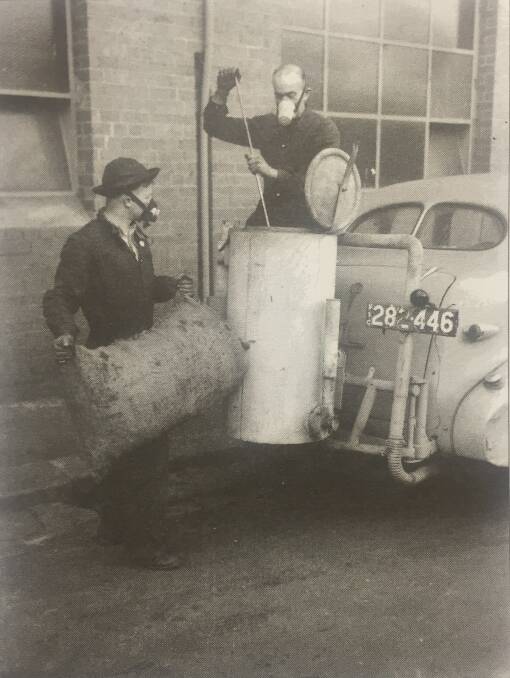
With WWII came a shortage of petrol, thus fuel rationing began in Australia on October 1, 1940.
Subscribe now for unlimited access.
$0/
(min cost $0)
or signup to continue reading
Private car owners were rationed according to the horsepower of their vehicle. At both ends of the scale, those with a horsepower of eight-10 were given only two gallons a month, while those vehicles above 30 received six gallons.
In 1942, when petrol prices reached 2 shillings 8 pence per gallon, coupons could be purchased for five shillings. Unused coupons were often traded, however it was frowned upon.
To halve the price of petrol, kerosene was used as a substitute by some car owners until the practice was declared illegal.
In place of petrol, some motorists used gas producers, while others put their cars on blocks for the duration of the war.
Charcoal burners were attached to the outside of a vehicle and the burning charcoal gave off a gas which powered the vehicle.
In June 1945, petrol rationing was increased by 20 per cent and became a real burden for business operators and farmers in the region.
Petrol was a necessity for farmers who had to get to town for business and household supplies, trips or social outings became less frequent.
Milk carrier, Toby Bevan, fitted a gas producer to the side of his truck. It was a cylindrical shaped firebox, perhaps two feet in diameter and four or five feet high.
Coal was burnt in it, producing gas that was piped through to the motor. Far from convenient, it needed to be lit at least 20 minutes before use and was not at all safe.
More than one vehicle suffered the ultimate fate as a result of a malfunctioning gas producing unit.
Another approach was the ‘gas bag’, which was used by Woodhills’ grocery delivery truck. A large metal frame supported an airtight canvas bag above the roof. Bags were as long and as wide as the vehicle and when full of gas, the whole unit looked similar to a double-decker bus.
The gas wasn’t pressurised, so the vehicle had a limited range and they were extremely heavy and unstable on the road.
When Alf and Mary Courtney formed an orchestra with Alf Tetley in the late 1930s, they travelled in a car fitted with a gas unit to village halls around the district to perform.
In October 1941, instructions on the installation of the gas producer units were made available at Harrison’s Service Station at Nowra. Mr H Neal was employed by Wollongong Technical College as the instructor and a gas driven truck was used for demonstrations.
In November 1941, brothers Harry, Jack and Michael Regan ordered a gas producer unit for their truck.
The Regans established pits for the burning of charcoal at Pyree on land east of the Crookhaven River, sadly Harry’s son Jack lost an eye while working there.
Petrol rationing ended in late 1947.
- This article was kindly provided by Shoalhaven Historical Society.

